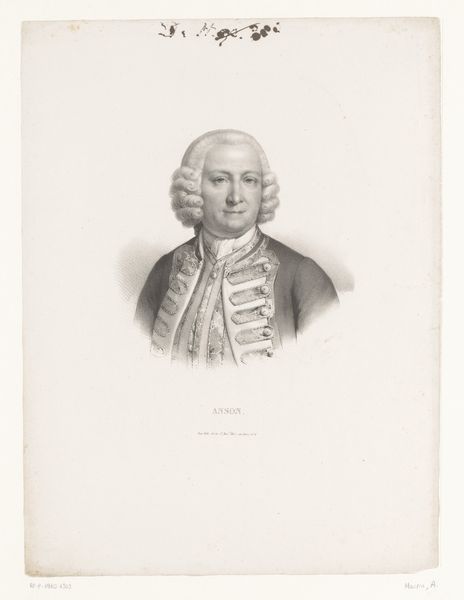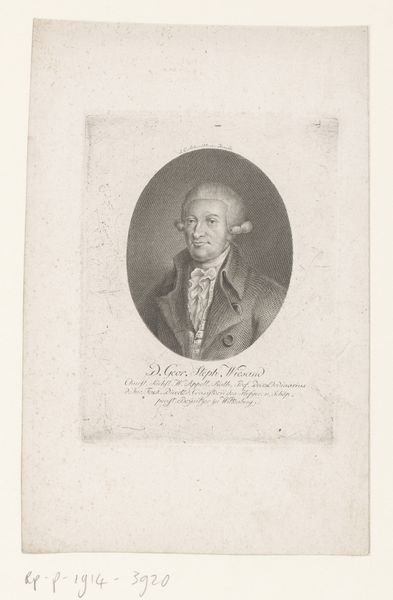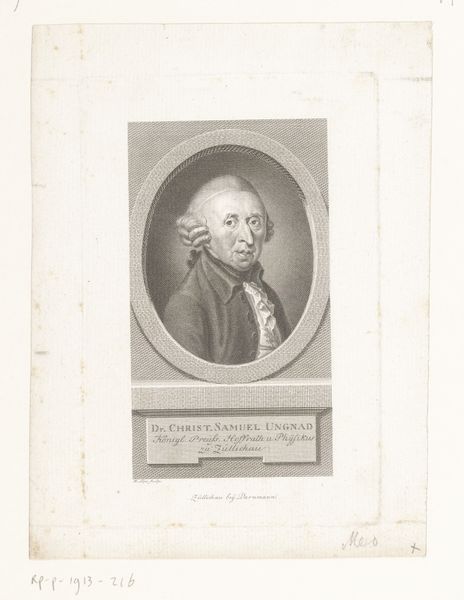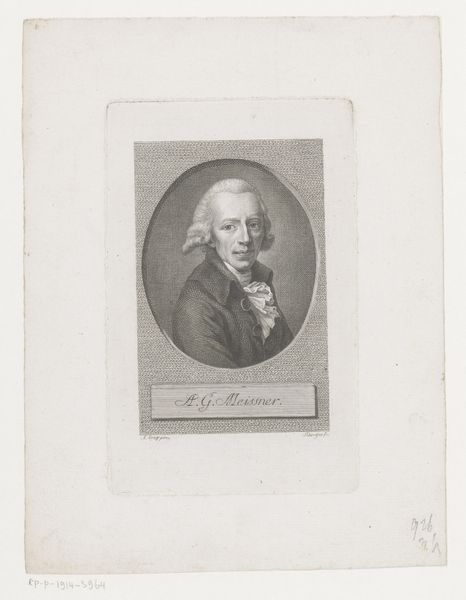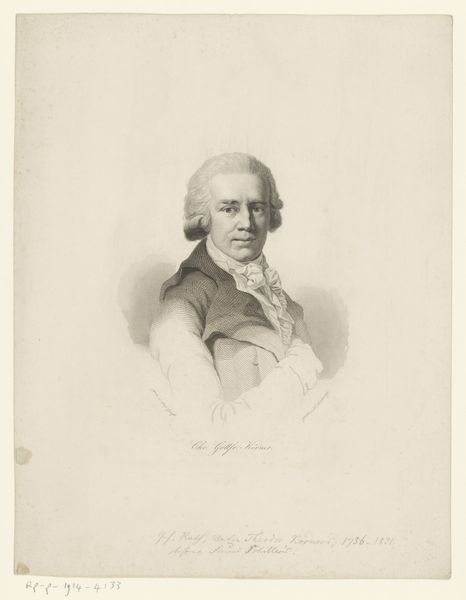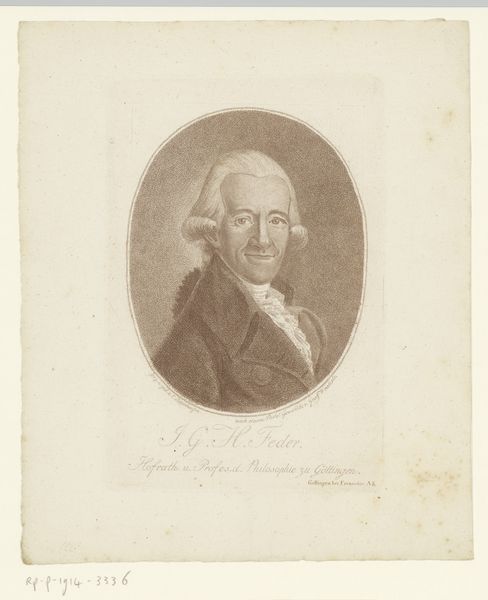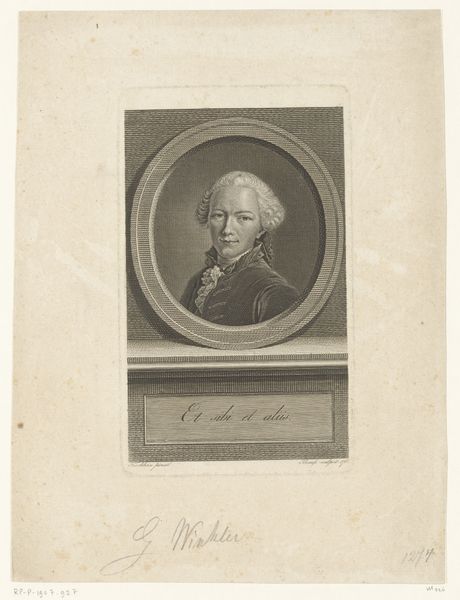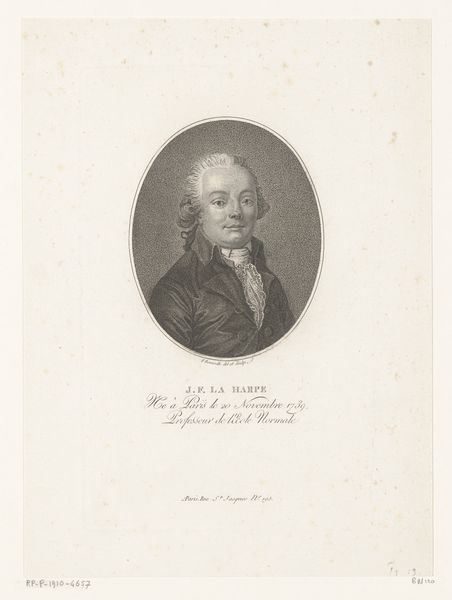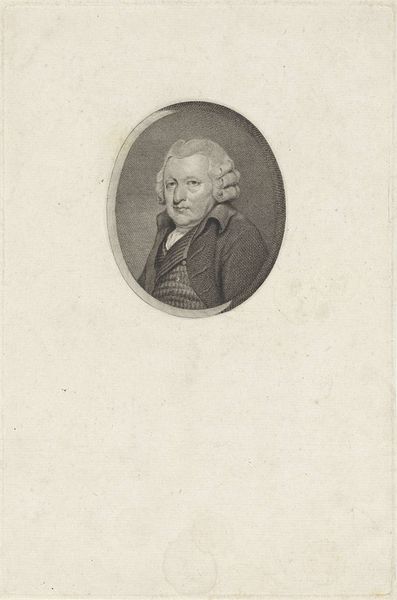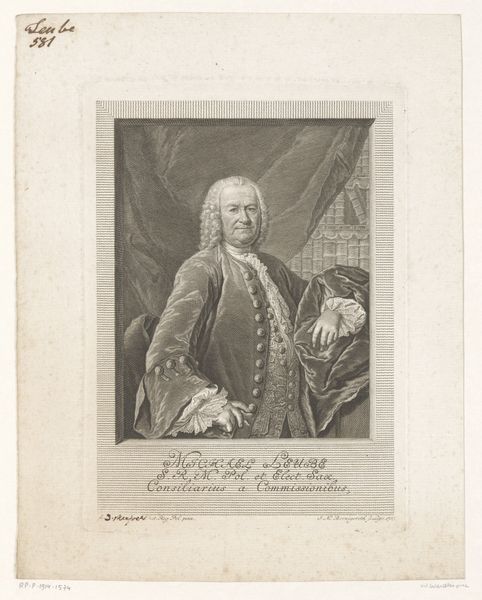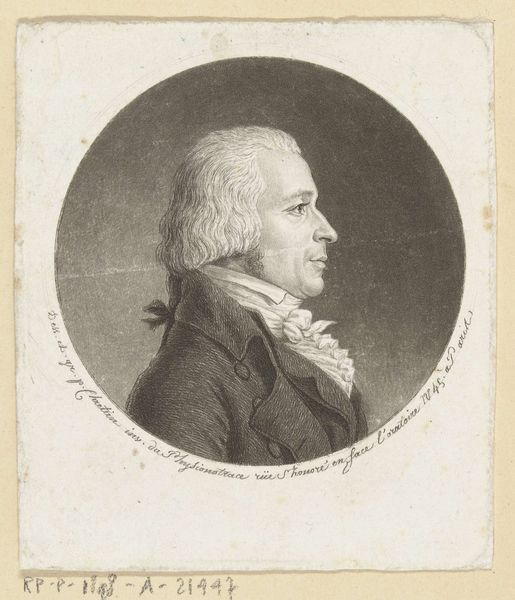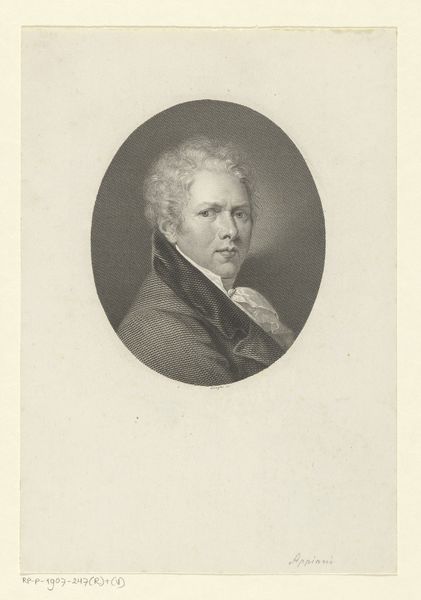
engraving
#
portrait
#
pencil drawn
#
pencil sketch
#
portrait reference
#
pencil drawing
#
romanticism
#
engraving
#
realism
Dimensions: height 341 mm, width 246 mm
Copyright: Rijks Museum: Open Domain
This is Antoine Maurin’s portrait of Louis-Antoine Bougainville, meticulously rendered through lithography. The lithographic process is key here. Unlike painting, or even engraving, it is a planographic technique. The artist works on a flat surface, traditionally limestone, using greasy materials to create an image. This is then chemically treated so that ink adheres only to the drawn areas, and repels elsewhere. The printmaker can then transfer the image to paper. Lithography democratized image production in the 19th century. It was far quicker than older methods of printmaking and allowed for relatively inexpensive reproductions. In this portrait, the fine lines and subtle gradations of tone speak to the capabilities of the medium. They also reflect the increased demand for portraits among the rising middle class, facilitated by new reproductive technologies. So, when you look at this print, remember that its meaning lies not only in the image it presents but also in the innovative processes and social context that brought it into being. It is a testament to the changing landscape of art, labor, and consumption in the 19th century.
Comments
No comments
Be the first to comment and join the conversation on the ultimate creative platform.
